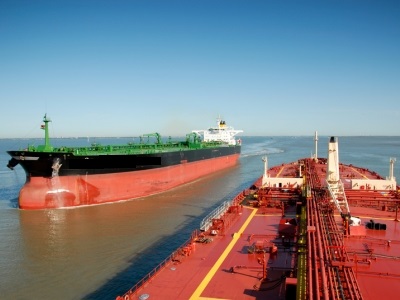The 2013 VGP took effect on 19 December 2013, and regulates discharges incidental to the normal operation of vessels covered under the scope of the VGP (non-recreational vessels greater than 79 feet in length, which are not vessels of the armed forces, operating in a capacity as a means of transportation). Exhaust Gas Scrubber Washwater Discharge is addressed under section 2.2.26 of the Final 2013 VGP
In accordance with Regulation 4 of MARPOL Annex VI, EGCS units may be used as an alternative means of compliance with the more stringent fuel oil sulphur limits established under Regulation 14 of MARPOL Annex VI, subject to approval by the Administration. Owners/operators are reminded that regulations pertaining to the VGP are applicable to discharges into US waters extending to the outer reach of the 3 mile territorial sea as defined in section 502(8) of the US Clean Water Act. Under VGP regulations, the pH limit for the washwater effluent shall not be less than 6.0, measured at the overboard discharge only.
This is not consistent with the methods for determining the pH limit under the IMO EGCS Guidelines (resolution MEPC.259(68)), where the pH limit for the washwater effluent is to be no less than 6.5 measured at the overboard discharge, or at a position 4m from the overboard discharge point while the ship is stationary.
Furthermore, under the IMO EGCS guidelines, this limit can be determined either by means of direct measurement, or by using a calculation-based methodology (computational fluid dynamics or other equally scientifically established empirical formulae) to be left to the approval by the Administration. These discrepancies become particularly relevant with the operation of some hybrid EGCS units (capable of operating in either open-loop or closed-loop modes) within waters subject to the VGP.
For example, such a system may be approved by an Administration as compliant with the washwater discharge criteria specified under the IMO EGCS Guidelines. However, the same unit may not be able to demonstrate compliance with the pH discharge limits under the VGP regulations while operating in open-loop mode unless designed to neutralize the washwater by dosing NaOH, or using other appropriate means, to achieve a pH of no less than 6.0 measured at the overboard discharge point.
Dilution of any discharge, including EGCS washwater, for the purpose of meeting effluent limits set forth in the VGP is prohibited. Accordingly, manufacturers of these systems may advise that operation of the EGCS unit within 3nm from shore in US waters shall only be in closed-loop mode. This is mainly due to the EPA not accepting a calculation based methodology for determining compliance with pH discharge limits, rather than any general VGP regulation prohibiting the operation of an EGCS unit in open-loop mode.
Lastly, owners/operators should also be cognizant of, and consider, any additional local restrictions that may be imposed on the operation of EGCS systems and/or discharge of EGCS washwater effluent. For example, discharge of EGCS washwater into the State waters of Connecticut is prohibited under the VGP individual State specific requirements.
Summary of pH requirements for EGCS Washwater Discharge
VGP: Para 2.2.26.1.1 pH
The discharge of washwater from the exhaust gas scrubber treatment system must have a pH of no less than 6.0 measured at the ship’s overboard discharge, with the exception that during maneuvering and transit, the maximum difference between inlet and outlet of 2.0 pH units is allowed. This difference is to be measured at the ship’s inlet and overboard discharge.
Resolution MEPC.259(68): Para 10.1.2 pH criteria
10.1.2.1 The washwater pH should comply with one of the following requirements which should be recorded in the ETM-A or ETM-B as applicable:
.1 The discharge washwater should have a pH of no less than 6.5 measured at the ship’s overboard discharge with the exception that during manoeuvring and transit, the maximum difference between inlet and outlet of 2 pH units is allowed measured at the ship’s inlet and overboard discharge.
.2 The pH discharge limit, at the overboard monitoring position, is the value that will achieve as a minimum pH 6.5 at 4 m from the overboard discharge point with the ship stationary, and which is to be recorded as the overboard pH discharge limit in the ETM-A or ETM-B. The overboard pH discharge limit can be determined either by means of direct measurement, or by using a calculation-based methodology (computational fluid dynamics or other equally scientifically established empirical formulae) to be left to the approval by the Administration.
Source: ABS
In the beginning, I was frank with you propecia before and after has changed my subsistence. It has become much more fun, and now I have to run. Just as it is improbable to sit.































































